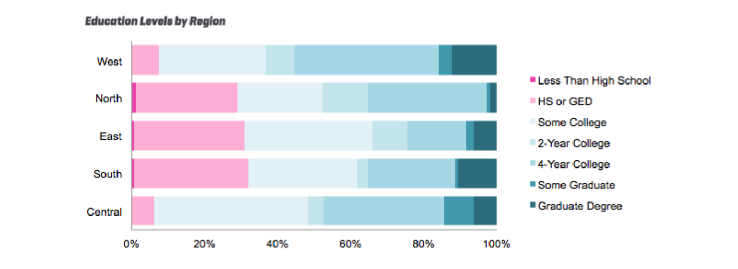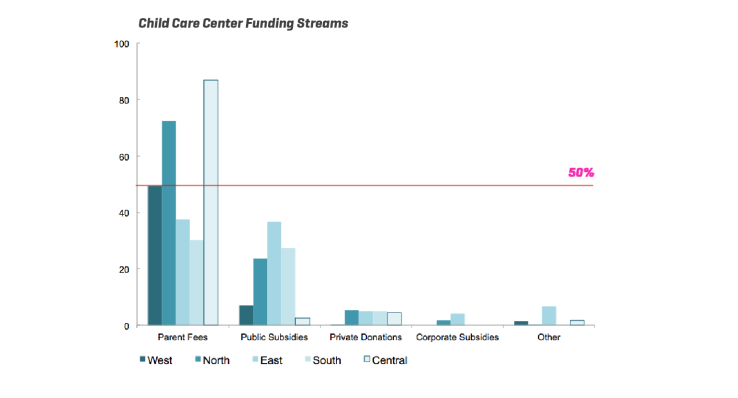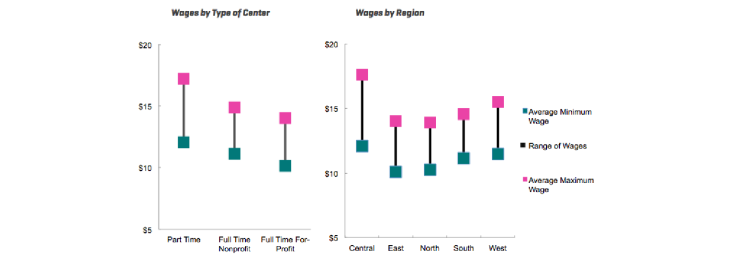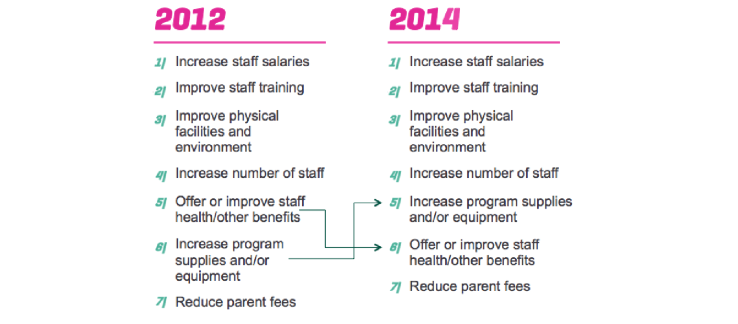Today, we’re proud to release the results of the 2014 Early Care and Education Survey – a look at trends across the early care field in our community and is the only one of it’s kind in Central Texas. This year’s data show more of the same positive trends we saw in 2012, but also similar challenges.
Teacher education varies widely depending on where you live
Our data indicates that teacher education levels in early childhood education centers vary greatly between the regions of Travis County. In Central and West Austin, the percentage of teachers with at least a bachelor’s degree is nearly double the percentage than in other areas:

Additionally, part-time centers reported that 58 percent of their teachers have a bachelor’s degree in early childhood development—or related field—versus only 26 percent in full-time, nonprofit centers and 15 percent in full-time, for-profit centers.
The survey also found teacher retention has decreased over the past two years and turnover rates have increased significantly for both full-time and part-time centers.
Parent fees make up the bulk of funding for child care centers – including in low-income areas
The survey found that centers, across nearly all regions in Travis County, depend on parent fees for the largest portion of their income. Centers located in East and South Austin use approximately equal percentages from parent fees and public subsidies.

This may be part of the reason why the cost of child care is so high – approximately the same as the cost of tuition at a public university in Texas.
Average wages rose $1 per hour, but remain roughy half of other teachers
Early care and education teachers, on average, made between $10.82 and $14.81 per hour with limited benefits.

While average wages increased by almost $1 per hour since the 2012 Survey was conducted, they are still roughly half of wages for public school Pre-K teachers.
Priorities for growth stayed the same: increased salaries, improved training
The top four center priorities in 2014 have remained the same as those in the 2012 survey.

Over the past two years, little has changed in terms of top center priorities – suggesting that centers are still lacking the necessary funding to make improvements.
[hr]
About the survey
The Early Care and Education Survey is a project by the UWATX Success By 6 program. We collected data on enrollment, quality rating, funding and budgeting priorities, as well as staff education, wages, benefits, working conditions and retention at child care centers.
The survey was distributed to all early childhood care and education centers in Travis County; approximately one-third of the centers responded to the online survey.
